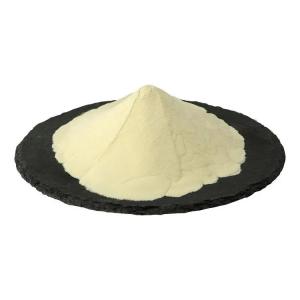Phosphatidyl serine is added to cereal bars.
Time:2025-08-15Phosphatidylserine (PS) is a phospholipid naturally present in cell membranes, particularly concentrated in the brain and nerve tissue. As consumer interest in functional ingredients grows, PS is increasingly being incorporated into a variety of food products. Among these, cereal bars stand out as a convenient, shelf-stable, and portable format that allows for the integration of PS into daily diets.
Chemical and Physical Profile
Phosphatidylserine consists of a glycerol backbone bound to two fatty acid chains, a phosphate group, and the amino acid serine. It is generally a fine to off-white powder when purified. Sensitive to light, heat, and oxidation, PS requires careful handling during food processing. Its lipid-soluble nature allows it to blend well into fat-containing components of cereal bar formulations.
Formulation in Cereal Bars
Incorporating phosphatidylserine into cereal bars requires a balance between maintaining its stability and achieving the desired taste and texture. Common strategies include:
Microencapsulation to protect PS from oxidation.
Incorporation into the binder (such as syrups, nut butters, or chocolate coatings) to ensure even distribution.
Combination with antioxidants to enhance shelf life.
The cereal bar base may include oats, puffed grains, seeds, nuts, and dried fruit, which provide structure and flavor. Natural sweeteners, flavors, and texturizers help mask any subtle taste from PS.
Processing Considerations
Typical production steps for PS-fortified cereal bars involve:
Mixing dry ingredients – Grains, seeds, and inclusions are blended for uniformity.
Preparing the binder – Syrups or fat-based mixtures are heated to the desired consistency.
Adding phosphatidylserine – Incorporated at controlled temperatures to avoid thermal degradation.
Forming and cooling – The mixture is pressed into sheets or molds, then cooled to set.
Cutting and packaging – Bars are portioned and sealed in oxygen- and light-resistant wrappers to maintain product integrity.
Advantages of the Cereal Bar Format
Cereal bars are a widely accepted snack category, valued for portability and convenience. They can serve as a versatile platform for delivering functional ingredients like phosphatidylserine without altering eating habits. Their diverse flavor profiles—ranging from fruit-based to chocolate or nut-based—allow for flexibility in masking the ingredient’s taste and enhancing consumer appeal.
Market Perspective
As functional snacking continues to trend upward, PS-enriched cereal bars are increasingly positioned alongside products containing protein, fiber, or plant-based fortifications. Advances in ingredient stabilization are enabling longer shelf lives and improved product quality, helping expand the availability of PS in mainstream snack products.
Conclusion
Adding phosphatidylserine to cereal bars represents an effective way to combine functional nutrition with a familiar snack format. Through precise formulation and careful processing, manufacturers can produce cereal bars that retain the stability and sensory appeal consumers expect while delivering added value through innovative ingredient integration.


 CN
CN





